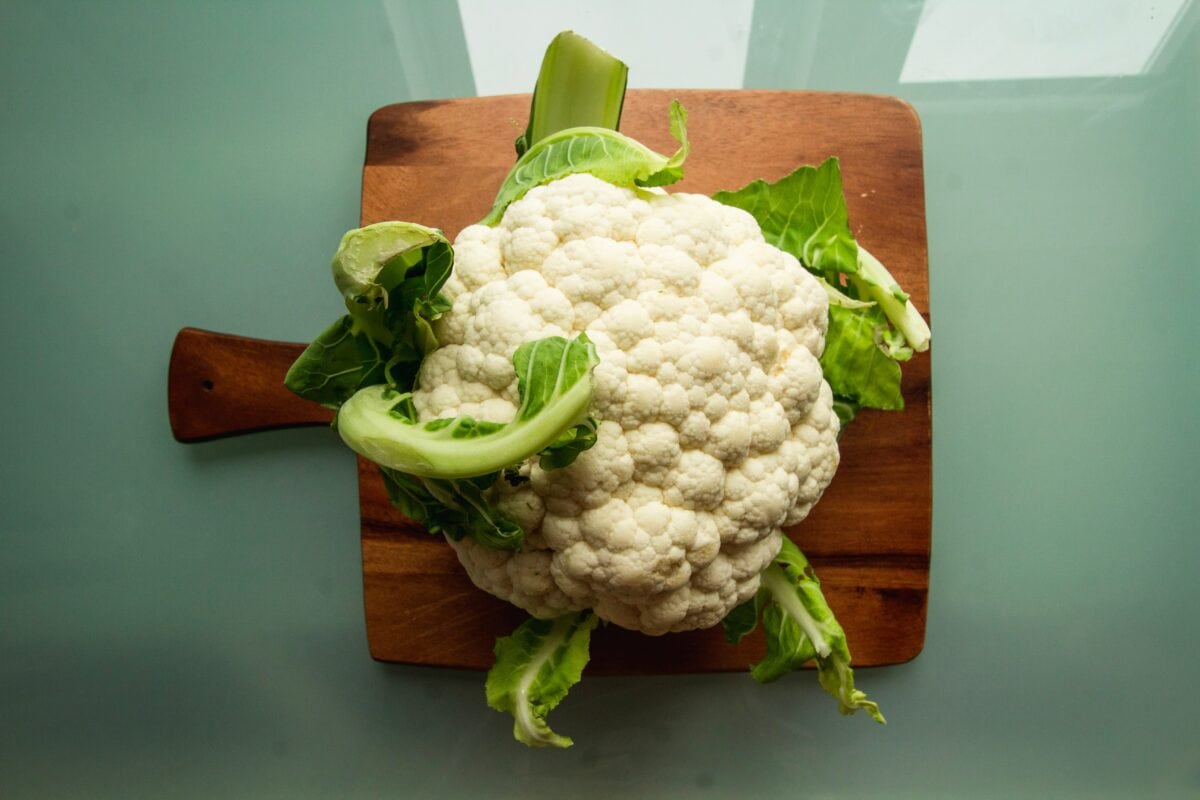Thinking retrospectively about cauliflower or broccoli I do not remember being part of my 3-year culinary experience. Perhaps broccoli is not one of the vegetables that have been on all roads until recently, but we can not say the same about cauliflower. My mother cooks it, just like that. If I ever endeavoured to try it otherwise, I do not remember.
The fact is that once I discovered the cauliflower and the great ways you can cook it, I ticked it on the list of favourite foods. You can cook quickly or with a little extra effort, without fat, with little or very low fat, depending on how healthy you want to be or eat.
It is part of the same family as broccoli and cabbage. We generally recognize it as white, but there are also variations of greenish, orange or, rarely, purple.
When can I put cauliflower into my baby’s diet?
If you rely mostly on people’s sayings, cauliflower “is not good for that little” then very late, in no case before 1 year.
Contrary to these beliefs, however, the vegetable is suitable for babies as soon as they become accustomed to solid foods, ie around the age of eight months. The biggest concern for mums goes to the gases that cauliflower could cause to the little ones. If you have noticed such problems as a result of eating other foods by the child, it would be advisable to postpone the introduction of cauliflower into his diet for 9-10 months.
At the same time, our firm recommendation is to advise your pediatrician before introducing cauliflower into a diversified diet.
Also, consider applying the 4-day rule as an additional protection measure to prevent and observe possible undesirable reactions.
Cauliflower is not found among foods that are potentially high for allergies, but there are people who may develop allergic reactions to this food.
What nutrients contains?
Found among foods with high nutrient density, based on the calories contained the “superior cabbage”, as Mark Twain called it, contains potassium, vitamin C, calcium, vitamin A, manganese, folic acid, and other vitamins and minerals in smaller quantities.
Vitamin C and manganese are antioxidants that support the fight against free radicals and protect the body against cancer.
The fiber contained in cauliflower helps the digestive system (12 grams of fiber per 100 calories), vitamin K and omega 3 acids (present in cauliflower as alpha-linolenic acid) are anti-inflammatory nutrients.
How do I choose and how do I keep cauliflower?
Choose a heavy cauliflower for its size with fresh leaves – sign that the vegetable is fresh, not “passed”. Size does not matter either for taste or for nutritional qualities.
Cauliflower must have inflorescences strong enough, unloved, unspoiled.
The legume is kept well in the refrigerator for up to a week, if it is fresh, in a paper bag or even uncoated. We do not recommend the plastic bag because it keeps moisture, which leads to accelerated deterioration.
A good idea is to place the cauliflower in the fridge with the inflorescences upwards, just so the moisture does not flow into its “hat”.
How to cook it?
Can be consumed raw – in salads (children may be more difficult to eat), boiled in water or steam, toasted or baked.
During boiling, it can change its color in response to the material from which the pot is boiled. To preserve its color, you can add lemon juice to the water that boils cauliflower.
Canned cauliflower can be easily eaten as “finger food” by babies. If you choose to boil it, you can have a little turmeric powder at the end, while in the oven you can cook it in oil, salt, pepper and a little garlic powder. Flavours are special, and the taste will not disappoint the flesh.
Other spices that can accompany cauliflower in the dishes are rosemary, onion, pepper and thyme.
If you choose to boil, 5-8 minutes should be enough for cooking, if you cook it in the oven, the baking time is longer, about 20-30 minutes. If you boil or bake it for too long, the vegetable gets a bad smell and it’s too soft.
By boiling, water-soluble nutrients may be lost, so it is advisable to use water to boil cauliflower to thin the baby’s puree, thus retaining its nutrients.
Although the leaves are edible and even aromatic, they require longer cooking times and are not used frequently in dishes.
Leaves can be used, however, to add flavour to vegetable soups, as well as the lighter side of cauliflower, which we usually throw after we cut out inflorescences.
Sources:
http://www.homemade-baby-food-recipes.com/cauliflower-baby-food-recipes.html
http://www.wholesomebabyfood.com/cauliflowerbabyfoodrecipes.html
http://www.whfoods.com/genpage.php?tname=foodspice&dbid=13
http://en.wikipedia.org/wiki/Cauliflower
http://www.innvista.com/health/foods/vegetables/caulifl.htm
Photo by Louis Hansel @shotsoflouis on Unsplash
